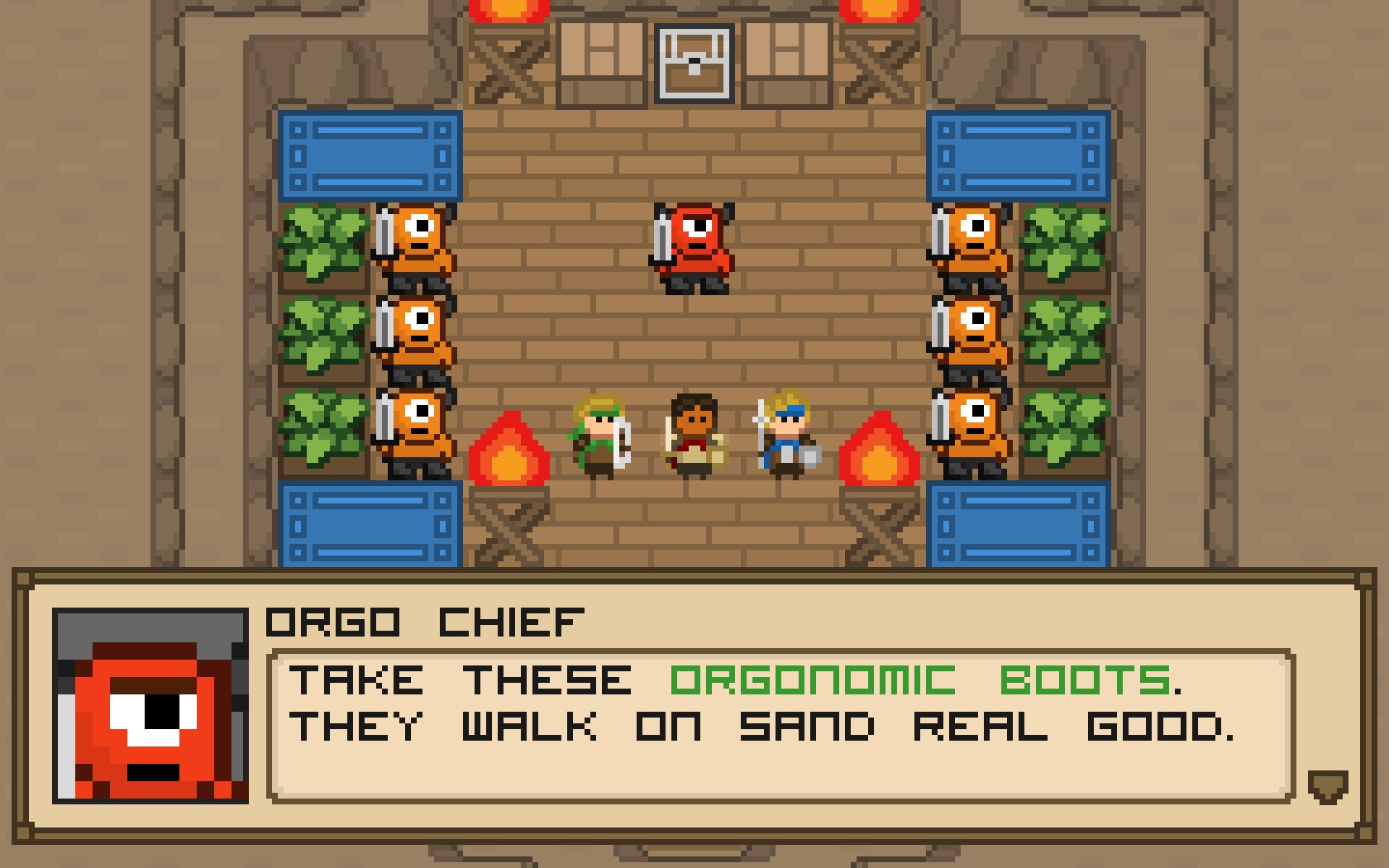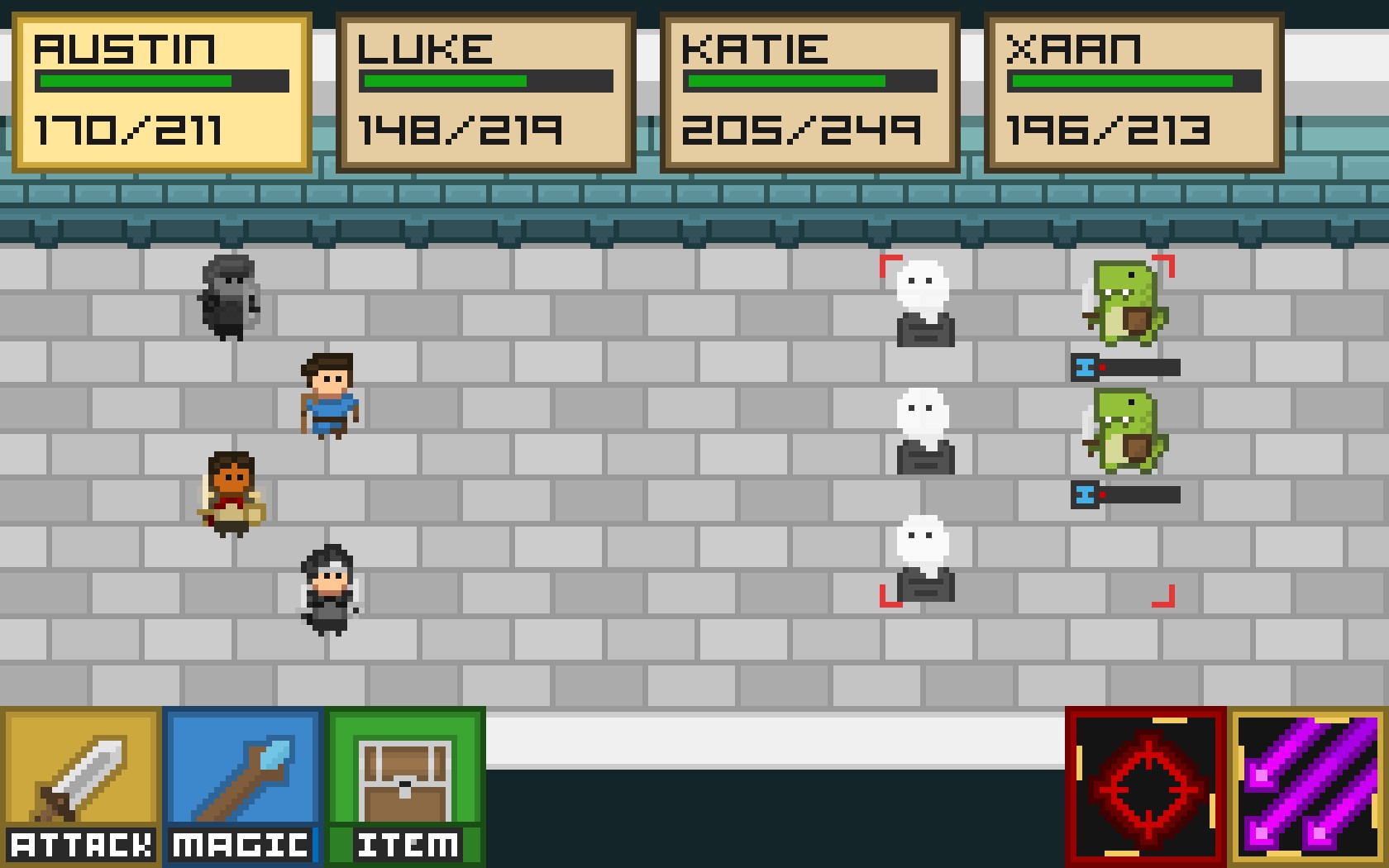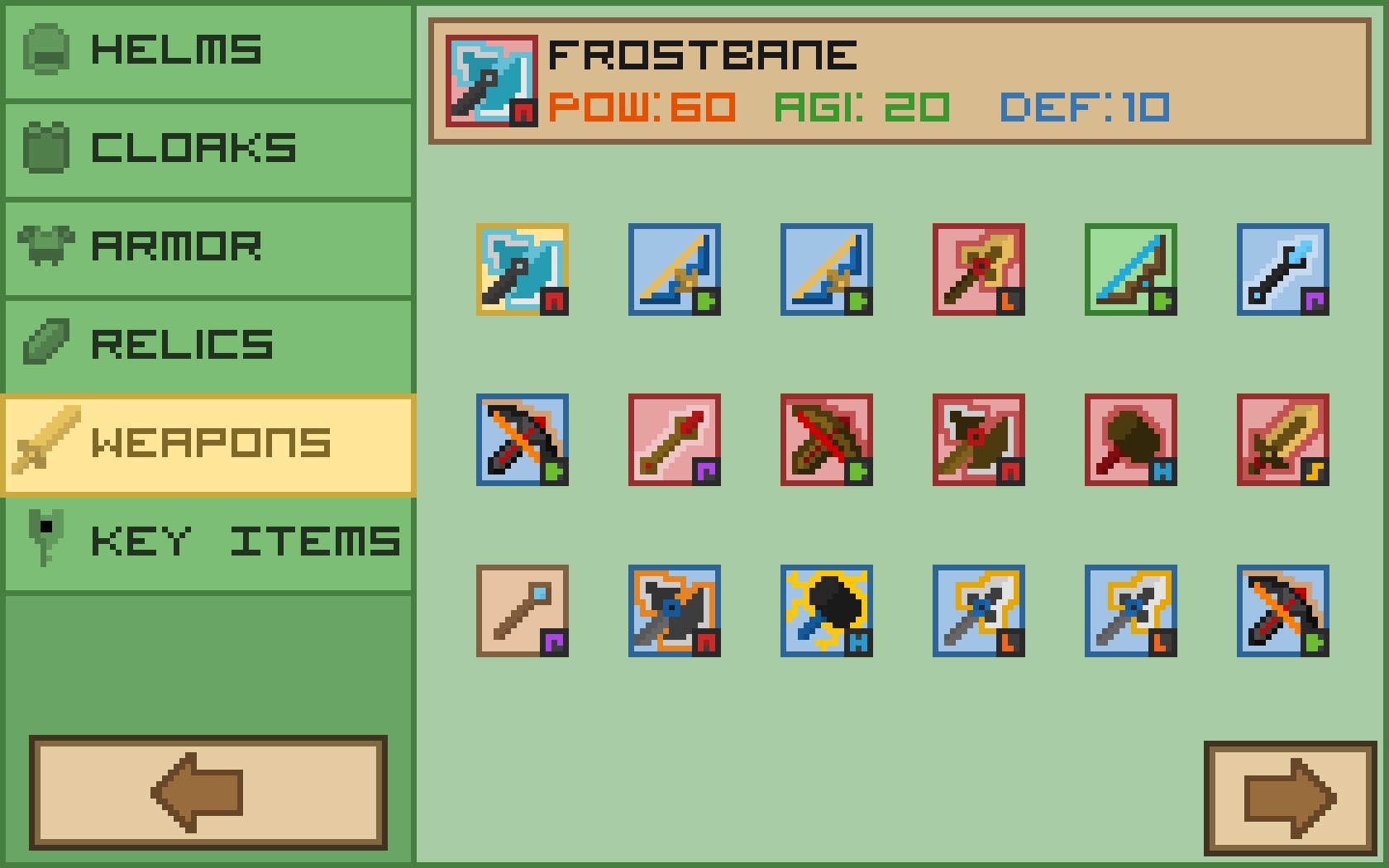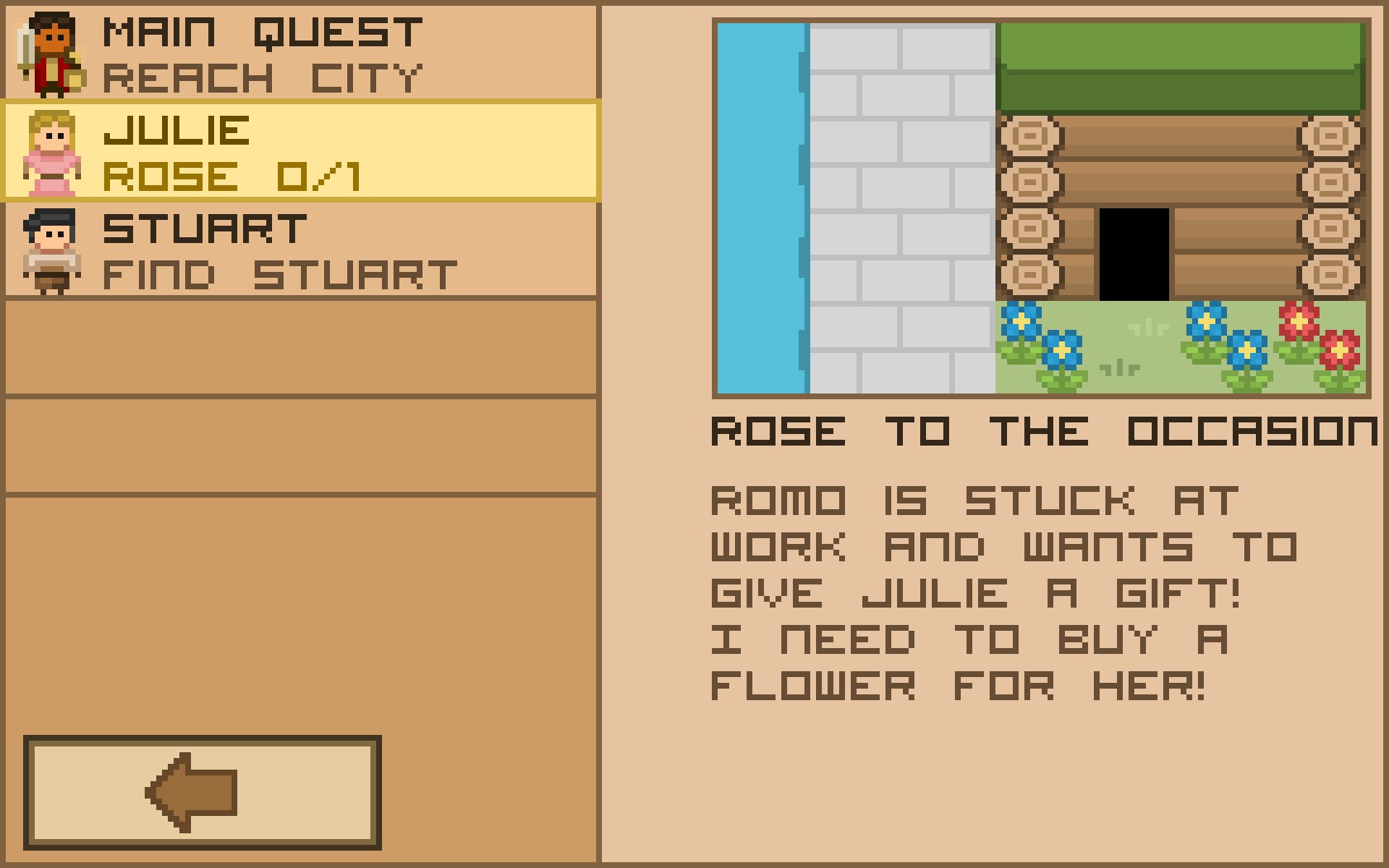A nostalgic romp and homage to classic fantasy RPGs, Pixelot stays shallow instead of diving deeper.
Type: Single-player
Genre: RPG
Developer: Kyle Berger
Publisher: Kyle Berger
Release date: 31 March, 2021


Intro
The iconic and influential Final Fantasy VII was probably the first RPG I played, and the rich story and irresistible characters indelibly cemented the genre’s place in my heart. Even the music has had a profound lifelong impact on my tastes. Pixelot is definitely a love letter to classic RPG fantasy video games, and in many ways it succeeds in capturing their charms. However, when it comes to the true hallmark of those games, the story and characters, Pixelot falls short. It’s a pleasant experience, but I don’t think it will prove to be a very memorable one.
Game Universe
Compared to the classic RPGs Pixelot is emulating, its universe is probably the game’s weakest area. The story hits many of the plot beats one might expect in a classic fantasy RPG storyline (e.g., elemental crystals, Dark Lord), but it feels derivative, milquetoast, and generic since it doesn’t really have anything that makes its own stamp on the genre. The game suffers from an overabundance of recruitable characters. For example, at an estimated two-thirds of the way through the game, I have 25 characters. Characters that are required to be picked up as part of the storyline tend to get a little more development in terms of backstory, personality, and dialogue, but optional recruitable characters don’t seem to have any story dialogue or development beyond their recruitment. In my personal opinion, the punny dialogue is one of the universe’s stronger aspects, but for those who hate that style of humor this may not be their cup of tea.

Gameplay and Mechanics
Pixelot’s gameplay experience emulates classic fantasy RPGs while fixing many of the issues that were prevalent in those games. For example, the game auto-saves, preventing the player from losing progress, and all characters are restored to full health in between battles, so there is no need to stress over this.
The player has 6 classes to choose from during initial character creation, although the player also recruits possible party members in those classes throughout the game. Besides choosing a class, there are also some character appearance customization options beyond what was available in most classic RPGs (e.g. skin tone). However, other than these initial choices, the initial character remains mostly a blank slate who isn’t required to be in the party and doesn’t seem to have any significant backstory or character development.
Unfortunately, part of the feel that Pixelot emulates well from classic turn-based RPGs is the repetitiveness that can sometimes occur during battles. The fact that the characters automatically gain new abilities and level up without player involvement in tailoring character builds in any way contributes to this feel of repetitiveness because there’s no sense of player investment in trying out new abilities as characters level up.
Combat is a combination of random encounters and enemies the player can see coming on the map. The party size is 4 characters, and those characters can be switched at any time outside of combat. However, which characters are in the party has no influence on dialogue, as some characters tend to have something to say before boss battles regardless of being in your party or not.

The ability to switch party members whenever can be both a pro and a con. On the pro side, it means the player doesn’t have to worry about backtracking very much if different characters would be better suited to the combat at hand. On the con side, this limits the need to strategize as much and also contributes to the gameplay experience feeling bland since choices don’t change the dialogue or puzzle solutions at all.
Every single character recruited has a different class, with the exception of whichever character class was selected during the initial character creation process. For example, with 25 characters at 18 hours of playtime, I have 24 different character classes to choose from when putting together a party. There also seems to be no limit to the amount of equipment and items a player can have in their inventory (as of level 70), and each piece of equipment can be upgraded in the Smith section at any time as long as one has the needed raw materials (e.g., wood). While not having to worry about inventory capacity can be a positive, in Pixelot’s case it progressively becomes more of an issue as the game proceeds due to the unwieldy menu interface. Ever-growing options of characters, equipment, and items coupled with no meaningful way to sort or view certain details at a glance makes decisions increasingly overwhelming.

Art Style and Graphics
As is implied by the game’s title, the art style and graphics are retro pixel. While this successfully gives Pixelot the surface aesthetics of ‘90s games, it ends up feeling more imitative of the style rather than evocative of the game universe’s sense of place, hindering the game’s immersiveness. After all, the pixelation of early video games was due to the limitations of technology at the time. Developers innovated within those constraints, and the graphics produced often represented the pinnacle of what was then possible. Today, retro pixel is an artistic choice and statement that can fail to make an impression if the artist doesn’t imbue something of their own into it.
Sound and Music
As a retro style game, Pixelot doesn’t have any voice acting. The music for the game is enjoyable but isn’t going to have most listeners seeking the tunes outside the game. This is one area where I would say the game isn’t particularly aiming to emulate classic RPGs like Final Fantasy which are renowned for their soundtracks. There are even a couple of places where the music doesn’t really fit the mood of the scene. For example, the music playing during the haunted library made me think of a beach. The sound effects tend to be fitting but unremarkable.
Achievements
Pixelot has 46 achievements, the majority of which seem to be ones that the player will automatically achieve in the course of a playthrough, although there are a few that seem like they have the potential to be missable. During my playthrough I discovered that some of the achievements were bugged. The developer was notified and released patches to address all of the bugged achievements I had found, but as of the time of review I haven’t completed my initial playthrough, so there may be further bugged achievements.
Performance
In addition to the bugged achievements mentioned above, there is at least one sidequest that was bugged for me. According to the Discussions for the game, this particular sidequest (involving Romo, Julie, and flowers) seems to work for some players but not others (like myself). As of the time of this review, the developer is still actively working on debugging (most recent patch/update was released April 26, 2021). None of the bugs that I have encountered so far were game breaking.

Verdict
At $14.99 at the time of review and an estimated 25 hours of playtime on an initial playthrough, Pixelot has ample content and sentimental charms for players desiring a nostalgic trip down memory lane. However, players who consider strong, highly developed storytelling and narrative to be essential elements of RPGs may find this game lacking.









